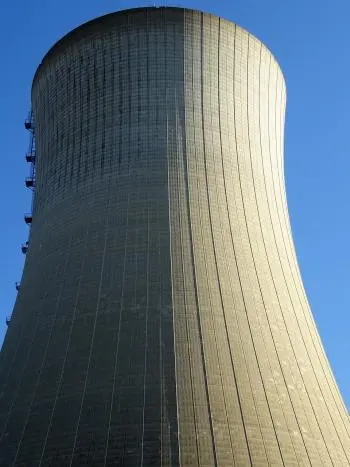
Building a nuclear power plant is a highly specialized process that involves a combination of nuclear, mechanical, electrical and, of course, civil engineering knowledge.
Civil engineering plays a critical role in this process, providing the solid foundations and infrastructure necessary for nuclear power plants to operate safely and efficiently.
Design and planning
The construction process for a nuclear power plant begins long before the foundation stone is laid. It involves extensive design and planning work in which civil engineers play an essential role.
Suitable locations must be identified, seismic and geological risks assessed, and the supporting infrastructure ensured to be robust and secure.
Foundation and support structures
Since nuclear power plants house reactors and heavy machinery, the foundation must be extremely robust to withstand significant loads and withstand earthquakes.
In addition, support structures, such as containment buildings and cooling towers, must be built to protect the plant and its components from external factors such as weather and possible impacts.
Geotechnical and seismic design
Before construction begins, civil engineers work closely with geologists and seismology experts to assess ground conditions and seismic hazards at the selected location. This is vital, since the foundation of a nuclear power plant must be designed to withstand earthquakes and other seismic events.
Engineers use detailed geotechnical data to design foundation systems that can absorb and dissipate the forces generated by an earthquake. The design must ensure that the plant remains intact and operational even under the worst circumstances.
Specific Foundations for Reactors and Heavy Machinery
Nuclear power plants house extremely heavy machinery and reactors. Therefore, the foundation must be specifically designed to withstand these extraordinary loads.
To do this, engineers use deep foundations, such as piles and foundation slabs, to distribute loads evenly and ensure the structure is stable over time.
Containment Buildings and Cooling Towers
Safety is a top priority at nuclear power plants, and containment buildings are a crucial component in this regard.
Containment buildings are designed to contain any possible release of radioactive material in the event of a reactor accident. These buildings must be built with resistant materials and reinforcement systems, which allows them to resist external damage and maintain the integrity of the structure even in extreme situations.
Cooling towers are designed to remove heat generated in the nuclear power generation process. Cooling tower designs must be robust enough to withstand environmental conditions and significant thermal loads.
Sustainability and long-term maintenance
In addition to the initial construction, civil engineers also take into account the sustainability and long-term maintenance of the supporting structures. This involves considering factors such as corrosion, aging of materials, and the possible need for future repairs and upgrades.
Water and cooling systems
Cooling is critical in a nuclear power plant to prevent overheating of the reactors. Proper temperature management is critical to prevent overheating of nuclear reactors and ensure optimal performance.
Next, we will delve into the importance and complexity of these systems and the role of civil engineering in their design and construction.
Types of refrigeration systems
In a nuclear power plant, mainly two types of cooling systems are used: the open-loop cooling system and the closed-loop cooling system.
-
Open Loop Cooling System: This system takes water from the environment, such as rivers or lakes, and uses it to cool the reactor and other components. The hot water is then returned to the environment. This approach is efficient but can have a significant environmental impact due to the increased temperature of the water released.
-
Closed Loop Cooling System: In this system, water is used to cool the reactor and other components, but instead of being released to the environment, it is cooled in cooling towers before being used again. This reduces the environmental impact, since the temperature of the released water is much lower.
Design and construction requirements
The water and cooling systems in a nuclear power plant must meet extremely stringent requirements. The water temperature must be kept within very narrow ranges to ensure the stability of the nuclear reaction and prevent any damage to the components.
The structures that house these systems are designed to withstand extreme conditions, such as high temperatures and dynamic loads generated by the flow of water.
In addition, security considerations must be taken into account. In the event of an unusual event, such as a blackout or cooling system failure, backup systems, such as emergency water injection systems, must be designed to ensure reactor integrity and prevent reactor core meltdown. .
Environmental impact mitigation
Cooling systems must minimize the release of heat to the environment, which can negatively affect local aquatic life and the surrounding ecosystem.
The construction of closed circuit cooling towers is a key strategy to reduce this impact.
Nuclear waste management
Nuclear waste management is an integral part of building a nuclear power plant. Civil engineers design and implement secure storage systems for nuclear waste, which involves building long-term storage facilities and developing containment barriers to prevent the leakage of radioactive material into the environment.


